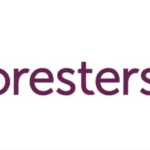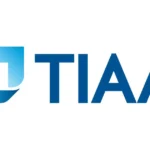Introduction
A massage business typically makes between $70,000 and $150,000 annually. Success hinges on location, pricing, and effective client retention.
Starting a massage therapy business can be a rewarding venture, not just for its therapeutic benefits but also for its financial potential. Understanding how much a massage business can earn involves considering several factors, from average revenue and service pricing to client volume and business size.
This article delves into these aspects, providing a comprehensive look at the earnings potential of a massage business. We will explore key variables that influence income, examine the impact of location, and offer insights into managing and growing a successful massage therapy practice.
Average Revenue
The average revenue for a massage therapy business typically ranges from $70,000 to $150,000 annually. This figure can vary based on several factors, including the business model, location, and client base.

Solo practitioners may earn on the lower end of this spectrum, while businesses with multiple therapists or a larger client base can achieve higher revenues.
Location Impact
Location plays a crucial role in the profitability of a massage business. Urban areas generally provide more opportunities and a larger client base, leading to higher revenue. Conversely, businesses in rural or less populated areas may experience lower earnings due to reduced demand and fewer clients.
For instance, a massage studio in a metropolitan city can charge higher rates and attract more clients compared to one in a small town.
How Can Google Ads Help You Advance Your Business Goals
Service Pricing
Service pricing significantly affects a massage business’s income. The cost of a typical massage session ranges from $60 to $120, depending on the type of massage, therapist’s experience, and geographic location.
Setting competitive yet profitable prices is essential for maximizing revenue. Offering premium services or packages can also boost overall earnings.
Client Volume
The volume of clients is another critical factor. A busy massage business can see over 1,000 clients per year. High client turnover, coupled with repeat business, contributes to increased revenue.
Building a loyal client base through excellent service and marketing efforts can help maintain a steady flow of customers.
Specializations
Specializations within the massage industry can lead to higher earnings. Offering specialized services such as sports massage, medical massage, or deep tissue massage often allows therapists to charge higher rates and attract clients seeking specific treatments.
Specializing can also enhance the business’s reputation and distinguish it from competitors.
Business Size
The size of the business influences revenue. Solo practitioners might earn less compared to larger establishments with multiple therapists. Businesses with several employees can handle a greater volume of clients, leading to increased overall revenue.
However, larger operations also come with higher operational costs and management responsibilities.
Operational Costs

Operational costs are a significant consideration for any business. For a massage therapy practice, these costs include rent, utilities, supplies, and staff wages. Typically, operating costs account for around 30-40% of revenue. Managing these expenses efficiently is crucial for maintaining profitability.
Seasonal Fluctuations
Seasonal fluctuations can impact revenue, with some periods being busier than others. For example, holidays and peak vacation times often see increased demand for massage services, while summer or winter might be slower.
Planning for these fluctuations and adjusting marketing strategies accordingly can help stabilize income throughout the year.
Additional Services
Offering additional services can enhance revenue. For instance, incorporating services like aromatherapy, skincare treatments, or wellness packages can attract a broader client base and increase the average transaction value. Diversifying services helps in maximizing income from each client visit.
Membership Programs
Membership programs and loyalty schemes can provide a stable income stream. By offering packages or subscription plans, businesses can ensure consistent revenue and foster client loyalty. These programs can also encourage repeat visits and reduce client turnover.
Insurance
Having insurance is essential for attracting clients and protecting the business. Massage therapy insurance can cover potential liabilities and provide peace of mind for both therapists and clients. Additionally, being insured can enhance the business’s credibility and professionalism.
Marketing Strategies
Effective marketing strategies are vital for driving client acquisition and increasing revenue. Utilizing digital marketing, social media, and local advertising can help reach potential clients. Building a strong online presence and engaging in community outreach can significantly impact a massage business’s success.
Economic Factors
Economic factors can influence consumer spending on non-essential services like massages. During economic downturns, clients may cut back on discretionary spending, affecting revenue. Conversely, a strong economy can boost spending on wellness and personal care services.
Client Retention
Maintaining a high rate of client retention is crucial for a successful massage business. Providing exceptional service, building relationships with clients, and implementing feedback can help ensure that clients return regularly. Retaining clients is often more cost-effective than acquiring new ones.
Staff Compensation

Staff compensation can impact a business’s profitability. Offering competitive wages or commission structures can attract skilled therapists and improve service quality. However, higher compensation costs must be balanced with revenue to maintain profitability.
Additional Tips
- Invest in Training: Continual staff training and development can improve service quality and client satisfaction, leading to higher revenue.
- Monitor Financial Metrics: Regularly tracking financial metrics, such as profit margins and revenue growth, can help identify areas for improvement and ensure business health.
- Build Partnerships: Collaborating with local businesses or health professionals can generate referrals and enhance client base.
Pros & Cons
| Pros | Cons |
| High Earning Potential: With the right strategies, massage businesses can achieve significant revenue. | Initial Costs: Starting a massage business requires significant investment in equipment, space, and marketing. |
| Flexible Hours: Many massage therapists enjoy flexible working hours. | Seasonal Variability: Revenue can fluctuate based on seasonal trends. |
| Growing Industry: Increasing awareness of wellness and health drives demand for massage services. | Physical Demands: Massage therapy can be physically demanding, leading to potential burnout. |
Answer to Key Question
Are massage businesses profitable?
Yes, massage businesses can be profitable, especially with effective pricing, high client volume, and good management.
How can I be successful in the massage business?
To be successful, focus on excellent service, effective marketing, client retention, and managing operational costs efficiently.
What factors influence the average revenue of a massage therapy business?
Factors include location, service pricing, client volume, and business size. Urban areas and larger businesses generally earn more.
How can a massage business manage operational costs effectively?
Effective management involves reviewing and optimizing expenses, such as rent and supplies, and implementing cost-saving measures.
What are some strategies to increase client volume in a massage therapy business?
Increase client volume by using effective marketing, offering specialized services, and maintaining high client satisfaction.
How do seasonal fluctuations affect a massage business’s revenue, and how can businesses mitigate these effects?
Seasonal fluctuations can impact revenue; businesses can mitigate this by offering seasonal promotions and adjusting marketing strategies.
Sample Revenue Breakdown by Business Size
| Business Size | Average Annual Revenue | Operational Costs (30-40% of Revenue) |
| Solo Practitioner | $70,000 – $90,000 | $21,000 – $36,000 |
| Small Studio | $90,000 – $120,000 | $27,000 – $48,000 |
| Large Studio | $120,000 – $150,000 | $36,000 – $60,000 |
Conclusion
Understanding the financial aspects of a massage business is crucial for success. By considering factors such as average revenue, location impact, service pricing, and client retention, you can make informed decisions and optimize profitability.
Effective management of operational costs, strategic marketing, and offering diverse services can further enhance earnings. Whether you’re starting a new venture or looking to improve an existing business, applying these insights can help you achieve financial success in the massage therapy industry.

Hi, I’m Amaliyah-Richard! I’m a dedicated author at Skyvoxes. I hold a Bachelor’s degree in Business, and I love writing about all things business. My aim is to make complex business topics easy to understand and accessible for everyone. Whether you’re a seasoned professional or just starting out, I hope my articles provide you with valuable insights and practical advice.










